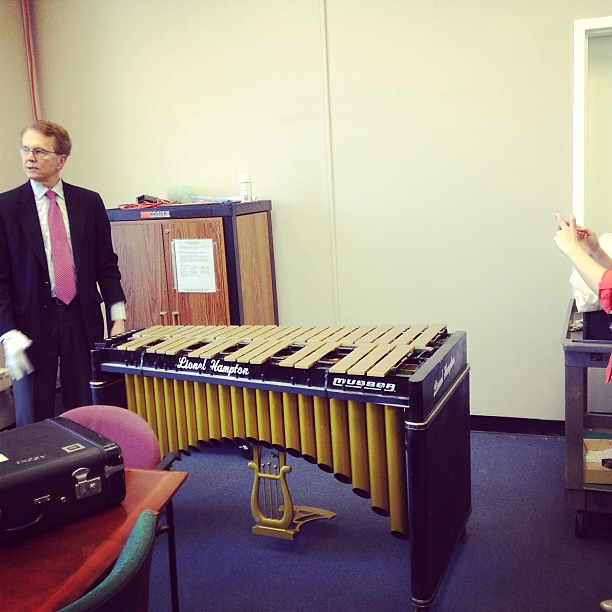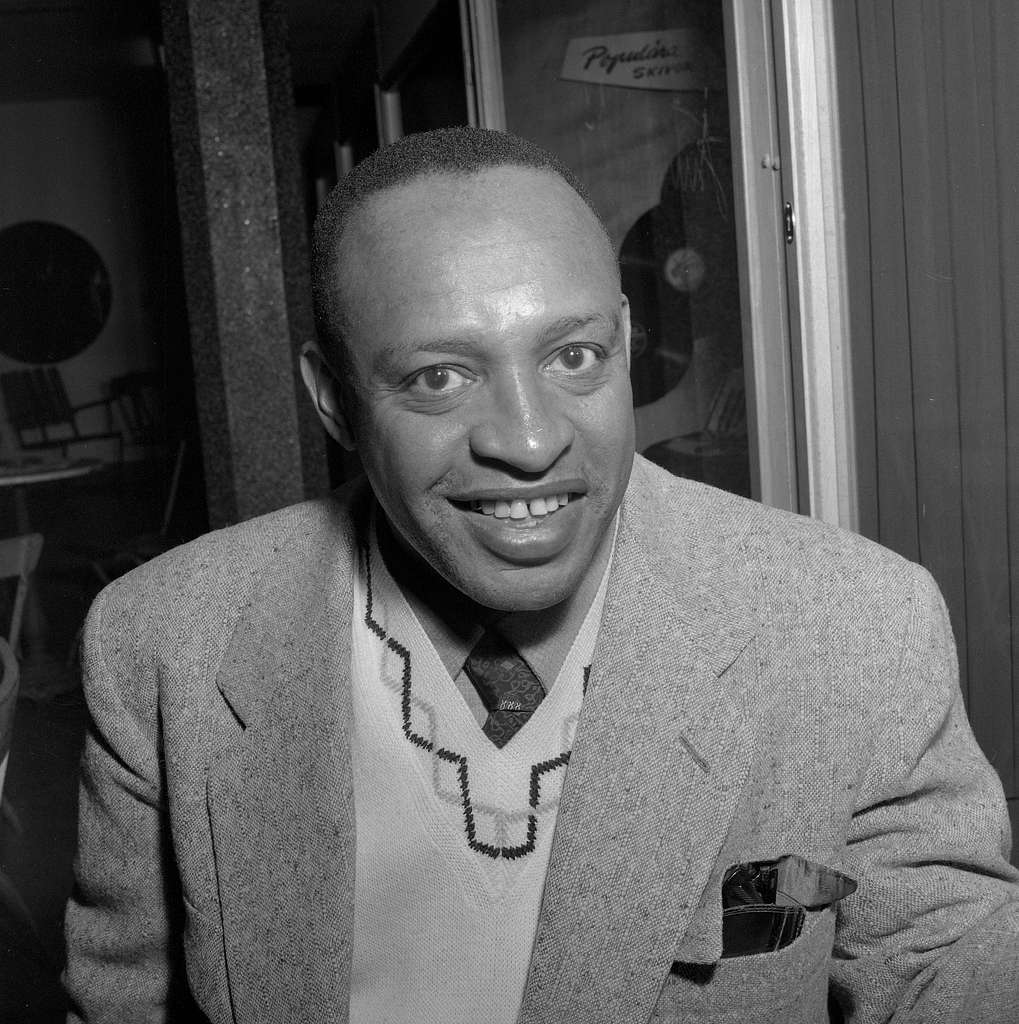We can’t leave Lionel Hampton out if we’re talking about legendary jazz musicians. He is a multi-talented American jazz musician who made a lasting impact on the world of jazz through his skills as a percussionist, drummer, vibraphonist, pianist, and band leader.
He won various awards for his accomplishments, including being named into the Alabama Jazz Hall of Fame. His notable partnership with Buddy Rich further solidified his place in jazz history.
In this article, we will explore this jazz legend’s drumming career and examine the influence of Lionel Hampton on the genre. Continue reading.
Who is Lionel Hampton?

Lionel Hampton was a gifted jazz musician from the United States. He was reared by his mother and was born in Louisville, Kentucky, in 1908. Before moving with his family to Chicago, Illinois, in 1916, he spent his early years in Kenosha, Wisconsin.
In his school days, Hampton joined the Bud Billiken Club, an alternative club for the Boy Scouts of America that Hampton could not participate in due to racial discrimination.
In the 1920s, he started having an interest in drumming. He began as a drummer before establishing himself as a pianist, vibraphonist, and band leader. He was honoured for his contributions to jazz music and had a long and prosperous career.
Lionel Hampton’s musical journey

Lionel Hampton’s musical journey is an inspiring one that has helped shape the jazz world. As a teenager in the 1920s, Hampton took xylophone lessons from Jimmy Bertrand and began to play drums. Raised Catholic, he also played fife and drum at the Holy Rosary Academy.
From there, Hampton moved to Chicago, where he played drums for the Chicago Defender Newsboys’ Band, led by Major N. Clark Smith. In 1927 or 1928, he moved to California and played drums for the Dixieland Blues-Blowers before taking a job drumming for the Les Hite at Sebastian’s Cotton Club in Culver City.
Lionel Hampton occasionally performed when he was with Les Hite and Nat Shilkret’s orchestra. He studied music at the University of Southern California in the early 1930s. Hampton led his orchestra in 1934 before starring with Louis Armstrong in Bing Crosby’s 1936 motion picture Pennies From Heaven.
His ability to perform tricks with many pairs of sticks, such as juggling and twirling, without losing a beat was one of his drumming specialties. He ultimately started practising the vibraphone; from then on, his career was entirely about that instrument.
Throughout his career, Lionel Hampton performed at famous jazz festivals alongside legends such as Louis Armstrong and other celebrated jazz musicians.
He also owns a big band. Dexter Gordon, Clifford Brown, Fats Navarro, Johnny Griffin, Charles Mingus, Art Farmer, Wes Montgomery, Dinah Washington, Joe Williams, Betty Carter, and Aretha Franklin were just a few of the talented musicians who played in Hampton’s well-known big band.
Awards nominations received

Lionel Hampton was an accomplished jazz musician and bandleader, and his contributions to the jazz world have earned him numerous awards and accolades throughout his career.
Throughout his career, from the 1930s to his death in 2002, Lionel Hampton received many awards from different music critics and organisations. He was one of the first jazz musicians to receive a Lifetime Achievement Award from Grammy Awards. In addition, he has been inducted into multiple Halls of Fame, such as the Alabama Hall of Fame, the International Jazz Hall of Fame, and The National Association of Jazz Educators Hall of Fame.
In 1987, Lionel Hampton even got an Honorary Doctorate of Humanities from the University of Idaho, and their School of Music was renamed “Lionel Hampton School of Music.”
These awards and achievements are a testament to Lionel Hampton’s enduring legacy and impact on the jazz world.
Discography
Lionel Hampton’s discography is expansive and includes many pivotal recordings. One of his earliest recordings was with Benny Goodman in 1936 when the two collaborated to make the groundbreaking single Flying Home. This became a major hit and began Hampton’s entrance into the jazz scene.
In 1940, he recorded the All-American Award Concert at Carnegie Hall, where he received praise from many jazz lovers. From there, he recorded a vast body of work through the mid-50s, including songs such as Moonglow, Boogie Woogie, and Crazy Hamp.
In 1964, Hampton reunited with Teddy Wilson and Gene Krupa and released the Benny Goodman Quartet – Together Again! This album served as a landmark for jazz recordings and is credited with spawning the swing revival of the mid-50s.
Throughout his career, Hampton released dozens of albums across various genres, including swing jazz, bebop, experimental jazz, Latin music, blues, pop music and more. He has contributed much to the musical landscape over his lifetime and will always be remembered.
Frequently Asked Questions
What are some of Lionel Hampton’s most famous compositions?
Lionel Hampton is known for many compositions throughout his career. He got some of the best pieces in the jazz industry.
Some of his most famous compositions include Midnight Sun, Flying Home, and Hamp’s Boogie Woogie, a few of Hampton’s most famous compositions. They were popular songs in the 1940s and were covered by many jazz and blues musicians.
What are Lionel Hampton’s most notable drumming techniques?
Lionel Hampton was a highly skilled and talented drummer known for his virtuosity and technical proficiency. One of his signature drumming specialties was his ability to perform tricks with multiple pairs of drumsticks, such as juggling and spinning, all while maintaining a steady beat.
How did Lionel Hampton contribute to the jazz drumming world?
Lionel Hampton made significant contributions to the world of jazz drumming throughout his career. He was known for his powerful, energetic drumming style and virtuosity on the drums and other percussion instruments.
He also composed some of the best jazz songs, such as Flying Home and Midnight Sun. His influence was particularly evident in the swing era when he toured and performed with some of the most renowned jazz musicians of the time.
Verdict
Lionel Hampton revolutionized jazz drumming with his dynamic style, virtuosity on drums and other percussion instruments, and mastery of tricks like juggling and spinning multiple pairs of sticks while keeping a steady beat.
He played a crucial role in developing jazz as a genre, and his drumming style was considered one of the most influential of the time. When you see Hampton perform, you’ll know how amazing he is.
His impact on jazz music and his contributions to American culture has been widely recognised and continue to be celebrated. He will always be remembered as a jazz legend and one of the best drummers, and his music will live on for generations to come.


